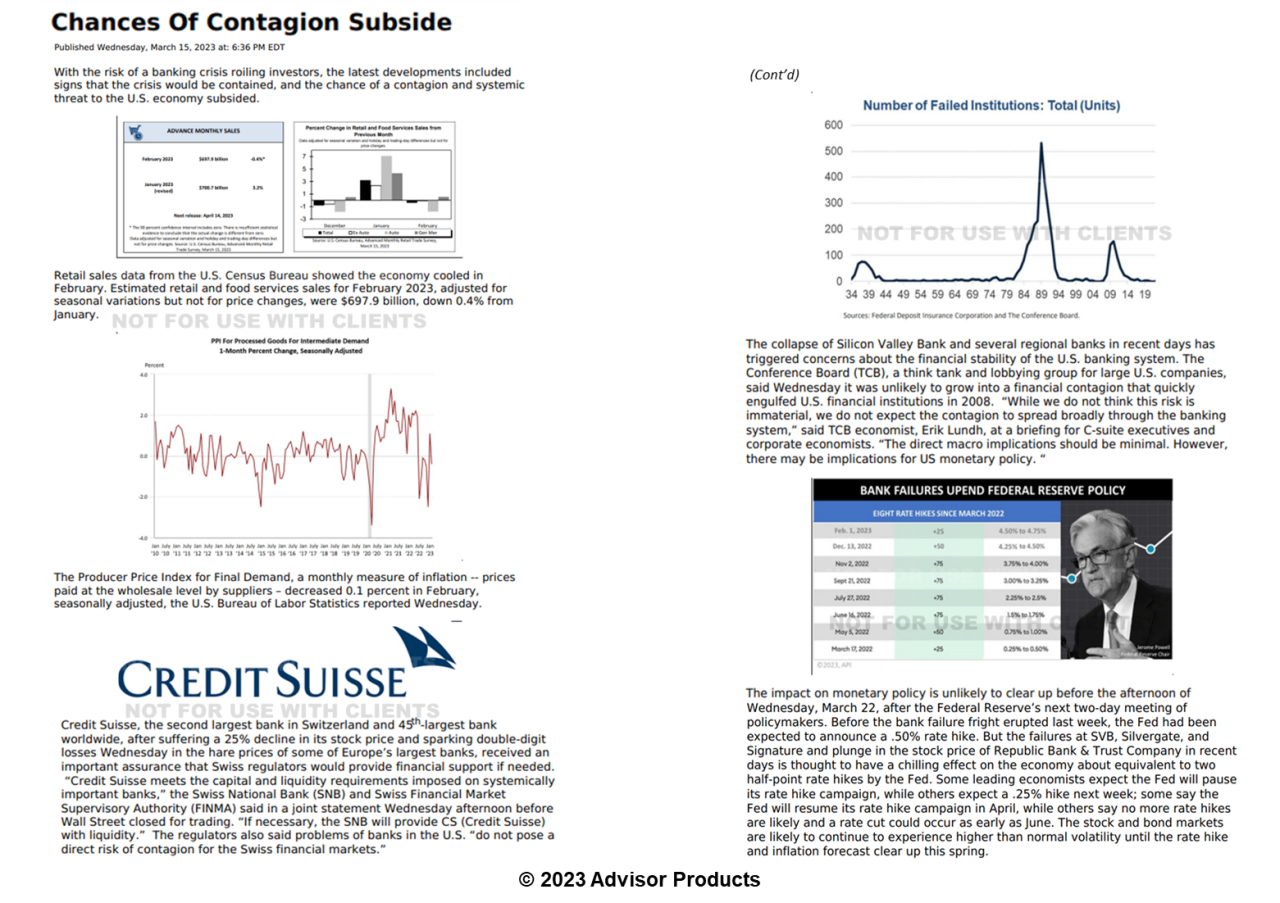- How it works
- Marketing Tools
- Competitive Research
- Finra-reviewed content
- Downloadable Content
- Advisor Education
- Advisor Websites
- Marketing Tips
- Crm Software Integration
- Search Engine Optimization
- Email Marketing Solutions
- Social media Marketing
- Advisor Marketing Videos
- Advisor Print Newsletters
- Advisor Lead Generation
- Expert Market Intelligence
- Branding and Print Materials
- Advisor Blogs
- Advisor Webinars
- Advisor Presentations
- Advisor Client Portals
- Webinars
- Advisor Google And Facebook Ads
- Advisor Public Relations
- About
- Resources
- Login
- Schedule A Demo
I was recently quoted in a FinancialPlanning.com article titled “When clients can’t afford to retire.” Although the article covered some of the basics, I thought it would be good to address this issue more fully. Before I start, what are situations when clients can’t afford to retire? Other than tragedy or catastrophe, this unhappy circumstance occurs when clients are spending as much as or more than they earn.
Let’s think about it. The best advice you can give clients is to live beneath their means. If they live above their means, they will incur ever-growing debt. If they live just at their level of means, they will never save and, thus, will never be able to retire. So, the only way to retire is to spend less money than what comes in. No matter the income level, many clients can fall into one of the first two unfortunate categories. As an advisor, it is our job to step in when clients are their own worst enemy. Here is my recommended four-step process:
1) Meet with the client(s) and diplomatically bring up the subject. These clients have a sinking feeling, knowing intuitively that they are on the wrong financial path. However, money issues are emotional and stressful – meaning that you need to be nonjudgmental, calm and measured in your conversations.
2) Explain the details of their financial situation. Again, it is important to do so in a tactful manner. Considering starting with, “I’m concerned about helping you secure your financial future.” Make it simple: While the clients are working, money coming in must be more than money going out. When the clients are retired, it is still important that money coming in is at least somewhat greater than money going out. Therefore, there are only two ways to influence that equation:
a. Reduce spending
b. Increase earnings
3) Work with the clients to come up with a plan. This should be a truly collaborative effort. A good strategy will likely involve a combination of approaches.
a. Reducing spending can be accomplished by:
i. Cutting taxes
ii. Taking advantage of tax-deferred savings
iii. Cutting down on discretionary spending
iv. Changing their living situation either before or after retirement – buying a home rather than renting (or vice versa), downsizing, moving to a different city/state
v. Delaying retirement
b. Increasing earnings can be accomplished by:
i. Seeking a promotion, changing jobs or working toward a new career
ii. Taking on additional work – a second job or spouse/partner working
iii. Better structuring portfolio investments both for tax efficiency and maximizing risk/return parameters
iv. Maximizing retirement benefits
v. Delaying retirement
Of course there are other strategies that could apply based on specific client situations. The most important parts are getting buy-in from the clients and documenting the plan.
4) The final step is follow-through. Schedule regular check-up meetings to monitor progress. Here, it is also important to be positive and matter-of-fact in your review.
It’s a fine line between living for today and saving for tomorrow. However, it’s up to us to make sure our clients don’t get too far off the line.
Questions?
How and why does the Advisor Products system work?
In today’s times, when consumers have become more demanding and tech-savvy, financial advisors must use content marketing to attract, inspire, engage, and convert their prospective customers.
A good content strategy is focused on developing and distributing consistent, valuable content to engage and retain prospective customers and target audience, via your website. Our content library provides financial advisors with fresh, high-quality financial content that is updated regularly, improving SEO along the way. And our automated e-newsletter and social media tools allow advisors to reach out to clients and prospects in an easy-to-use manner, providing frequent touch points for optimal brand building.
- Differentiate you from competitors
- Expose clients and prospects to your brand message more frequently
- Build an ongoing relationship with customers
- Increase your follows and fans on social media
- Drive more prospects to your website
- Help convert prospects into leads
- Increase number of pages indexed in Google
What products and services do you offer?
Can I buy services if my website is not hosted with you?
What can I expect during the onboarding process?
What if I have questions after my website is built?
Seeing is Believing.
See how easy it is to get started with our all-in-one digital marketing platform that drives leads, encourages referrals and increases client engagement.
SCHEDULE A DEMO
By using Advisor Products you agree to our use of cookies to enhance your experience I understand




